| |
Hepatitis C virus (HCV) testing and diagnosis rates in the commercially insured and Medicare populations in the U.S: 'HCV testing rates low.... 1.1% in the commercial population and 1.7% in the Medicare population.....partially explain the high percentage (75%) of undiagnosed patients' (slides below)
|
| |
| |
"approximately 4 million individuals (1.6% of the population) are projected to be anti- HCV antibody positive, and of these, 66% were born between 1946-1964..... 75% of HCV-infected individuals in the general population are estimated to be undiagnosed....prevalence of anti-HCV antibodies among men (2.1%) is almost double than that among women (1.1%).....1 million patients projected to develop cirrhosis by 2020 (75% of the projected patients with cirrhosis will be men).....liver disease-related deaths due to HCV to increase from 145,567 in 2000-2009 to 254,550 in 2010-2019 (an increase of 75%).....total HCV-related medical costs to increase from the current $42 billion to $64 billion in 2015 and $83 billion in 2020"
American Public Health Association Annual Meeting Monday, October 31, 2011: 1:05 PM
Baris Deniz, MSc , Vertex Pharmaceuticals Incorporated, Cambridge, MA
Bruce Pyenson, FSA, MAAA , Milliman, Inc, New York, NY
Kosuke Iwasaki, FIAJ, MAAA , Milliman, Inc, New York, NY
Camilla S. Graham, MS, MPH , Vertex Pharmaceuticals Incorporated, Cambridge, MA
Introduction: Hepatitis C virus (HCV) infection is the most common blood-borne disease in the U.S., with an estimated 4.1 million individuals (1.6% of the population) testing positive for anti-HCV antibodies. Chronic HCV infection may lead to liver failure, hepatocellular carcinoma, and liver transplant. However, ~75% of infected patients remain undiagnosed.
Methods: To study the relationship between U.S. testing and diagnosis trends, we analyzed the 2004-2008 Thompson MedStat Marketscan and the Medicare 5% sample databases. Patients tested were identified using outpatient claim and CPT codes for diagnostic tests. Medical claims were analyzed to identify testing outcome using ICD-9 codes. For the commercially insured population, the percentage being treated following diagnosis was identified using HCPCS/NDC codes.
Results: Annual HCV testing rates for commercial and Medicare populations were 1.1% and 1.7%, respectively, and 2% and 9% of the tested population was diagnosed, respectively. HCV testing was more common among younger patients among whom HCV prevalence is low, and less common among "baby boomers" (1946-1964), who account for up to two-thirds of the HCV-infected population. Overall, 19% of the commercially insured population received treatment within one year following initial diagnosis.
Conclusions: HCV testing rates in the commercially insured and Medicare populations were low in 2004-2008 in the U.S. These findings may partially explain the high percentage of undiagnosed patients. Treatment within one year following diagnosis was 19% in the commercially insured population. Further studies are needed to explore other potential causes for low testing and diagnosis rates in the U.S.
Estimating the prevalence of Hepatitis C cases in New York State: 'chronic HCV prevalence estimate was 1.33% (range: 0.44, 2.31%) or 197,705 cases'
From Jules: preliminary small sampling study in NYS found prevalence in immigrant communities equal to national prevalence suggesting a higher overall number of HCV cases in NYS and in other cities as well.
Monday, October 31, 2011
Rachel Hart-Malloy, MPH , AIDS Instititue, New York State Department of Health, Albany, NY
Colleen Flanigan, RN, MS , AIDS Institute, New York State Department of Health, Albany, NY
Alvaro F. Carrascal, MD MPH , AIDS Institute, New York State Department of Health, Albany, NY
BACKGROUND: The prevalence of hepatitis C virus (HCV) in New York State (NYS) is currently unknown. With HCV-related morbidity, mortality, direct and indirect care costs expected to rise in the next two decades, an estimate of the prevalence of HCV antibody (anti-HCV) positivity and chronic HCV at the state-level can inform health policy and planning decisions regarding counseling, screening, medical management and resource allocation. METHODS: Anti-HCV prevalence by socio-demographic subgroups among respondents ages 20 and older from the National Health and Nutrition Examination Survey (NHANES) from 1999-2008, were extrapolated to the underlying socio-demographics within NYS regions. Socio-demographics chosen were based upon predictive modeling. Accounting for populations excluded in NHANES sampling (i.e. incarcerated and homeless), prevalence estimates from existing literature were extrapolated to the underlying size of such groups in NYS. The number of cases was summed providing a statewide anti-HCV estimate. The proportion of chronic cases from NHANES was applied to estimate the prevalence of chronic HCV. RESULTS: Socio-demographics predictive of anti-HCV positivity were: age-group, gender, race/ethnicity, and poverty. The expected anti-HCV prevalence in NYS, not accounting for populations excluded in NHANES was 1.64% (N=235,128). Accounting for excluded populations, there were an additional 51,134cases (anti-HCV prevalence: 1.95% (range: 0.96, 2.98%)). The chronic HCV prevalence estimate was 1.33% (range: 0.44, 2.31%) or 197,705 cases. CONCLUSION: This methodology suggests a high burden of HCV in NYS for those ages 20 and older. Results can be used to inform program planning, evaluate prevention measures and project future health needs of the population.
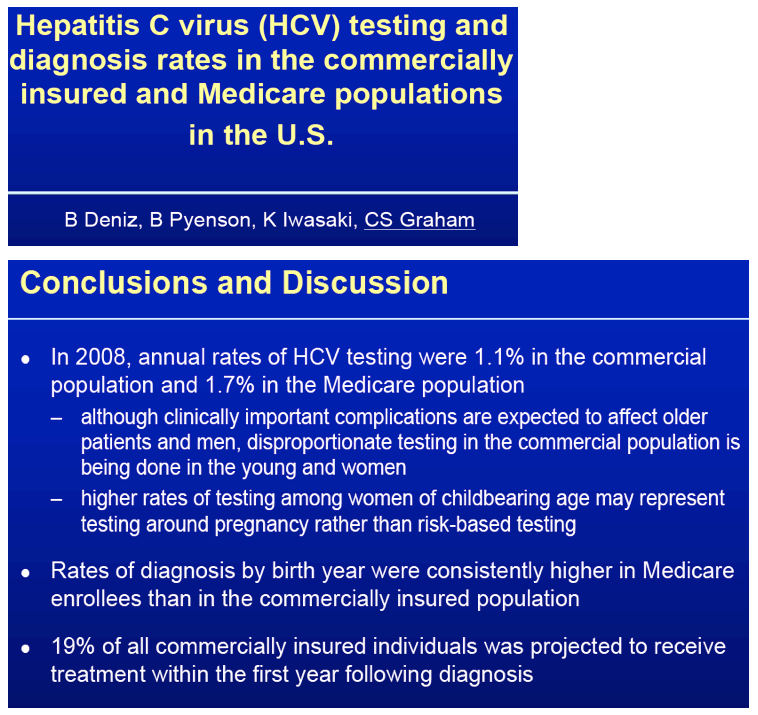
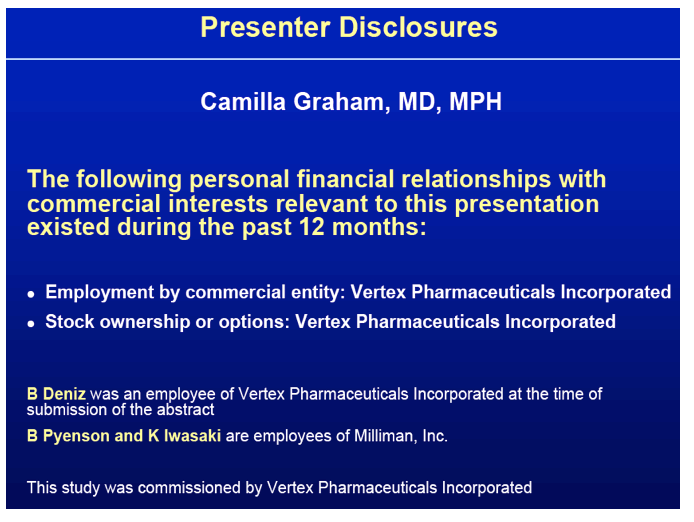
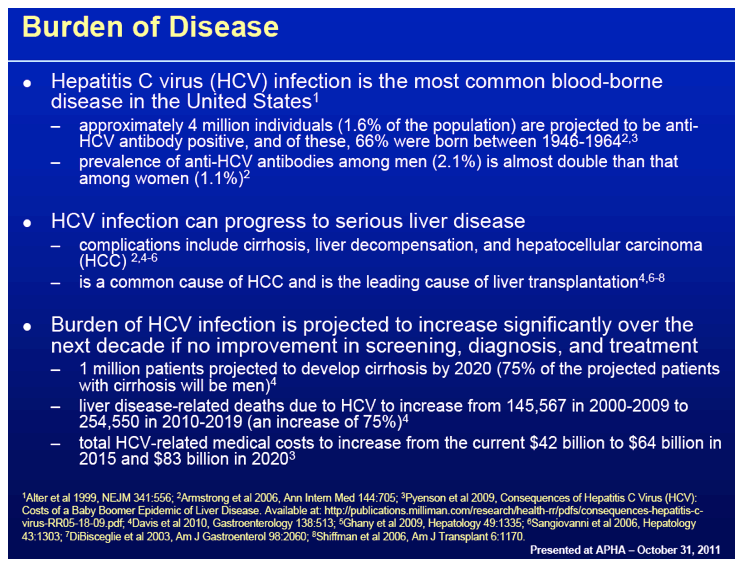
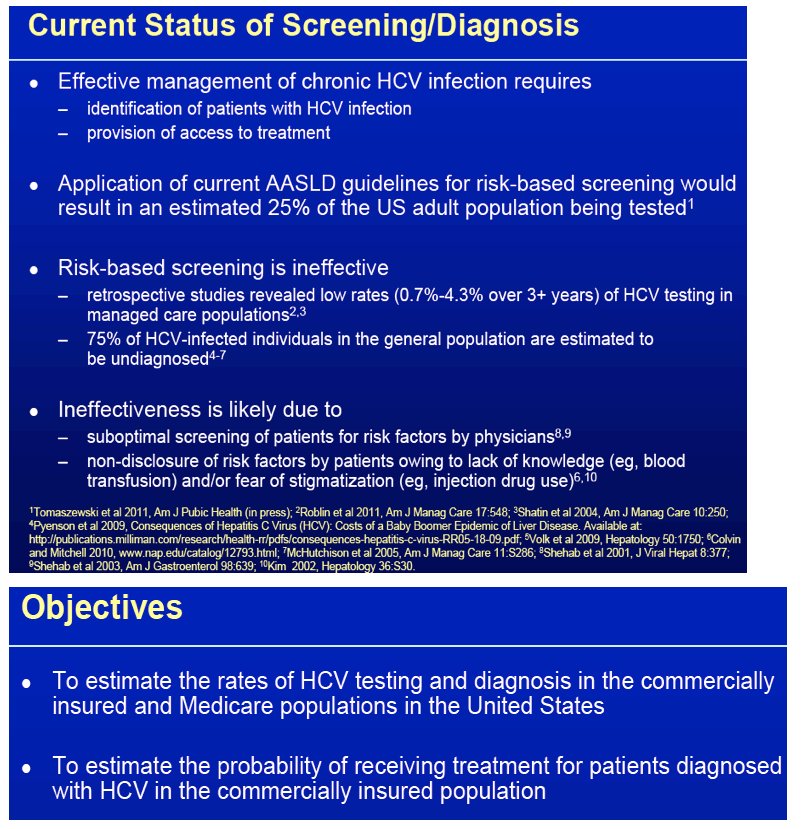
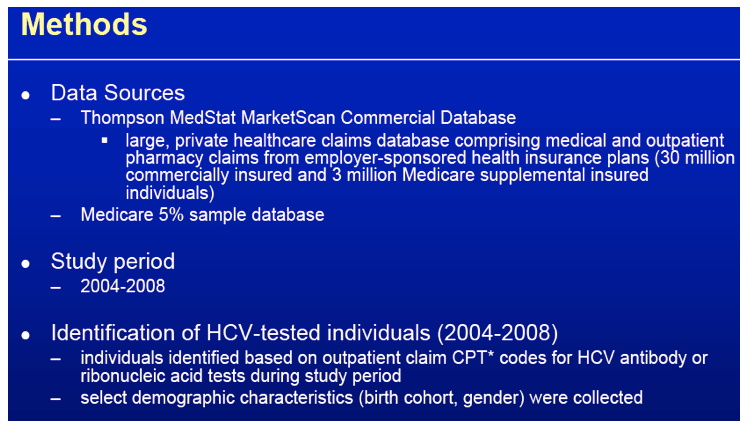
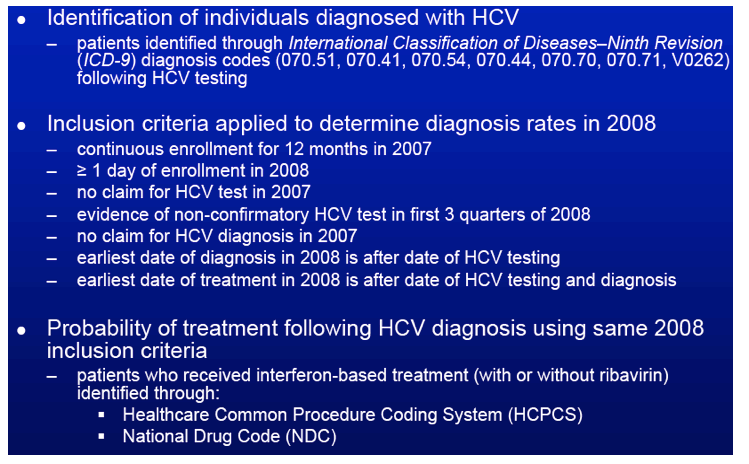
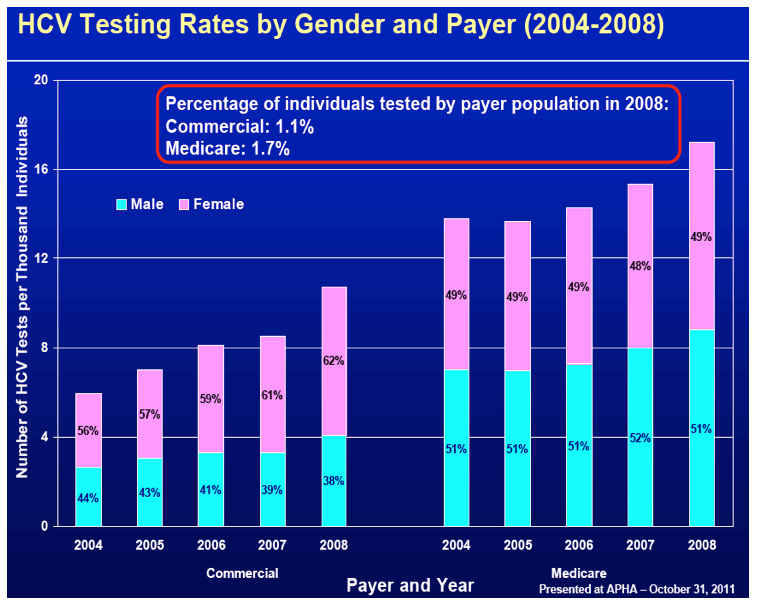
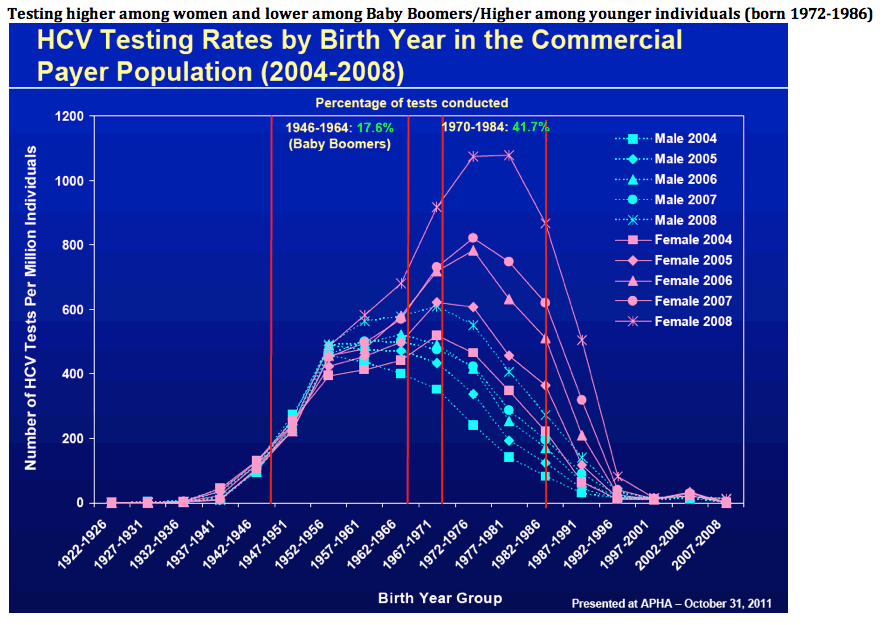

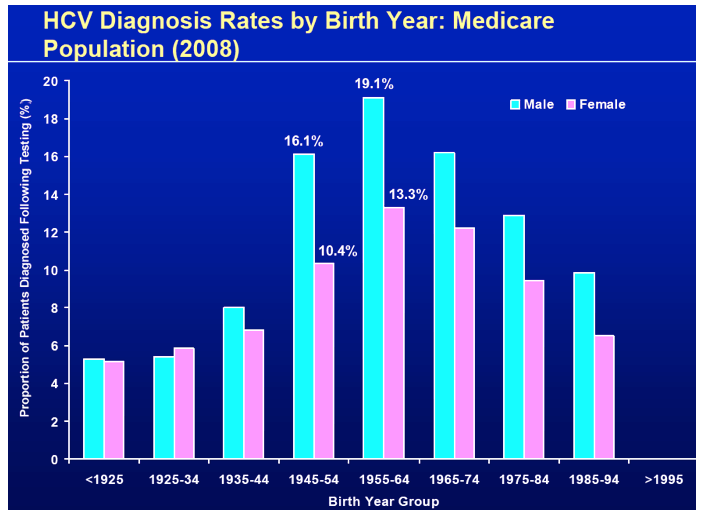
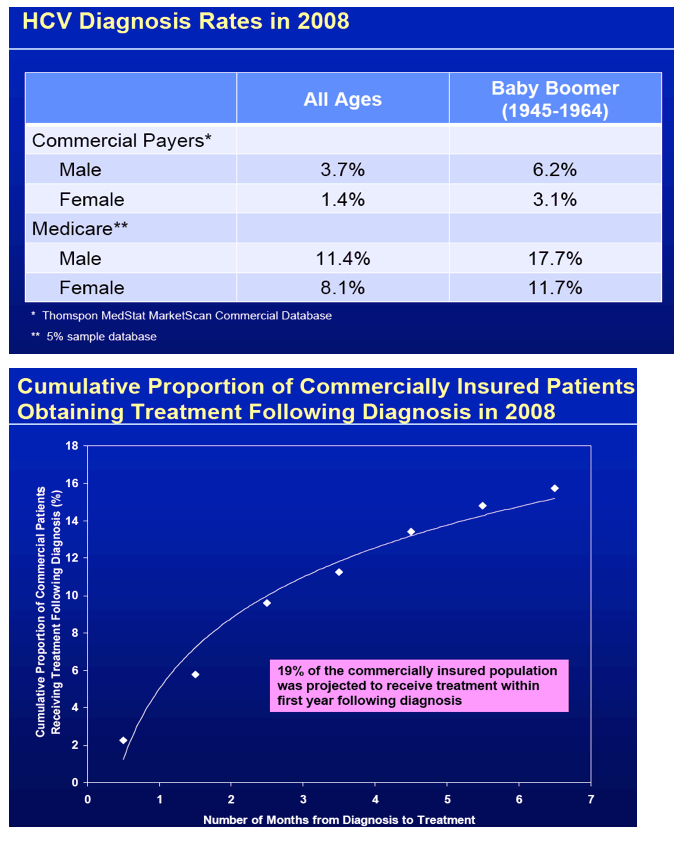
|
|
| |
| |
|
|
|